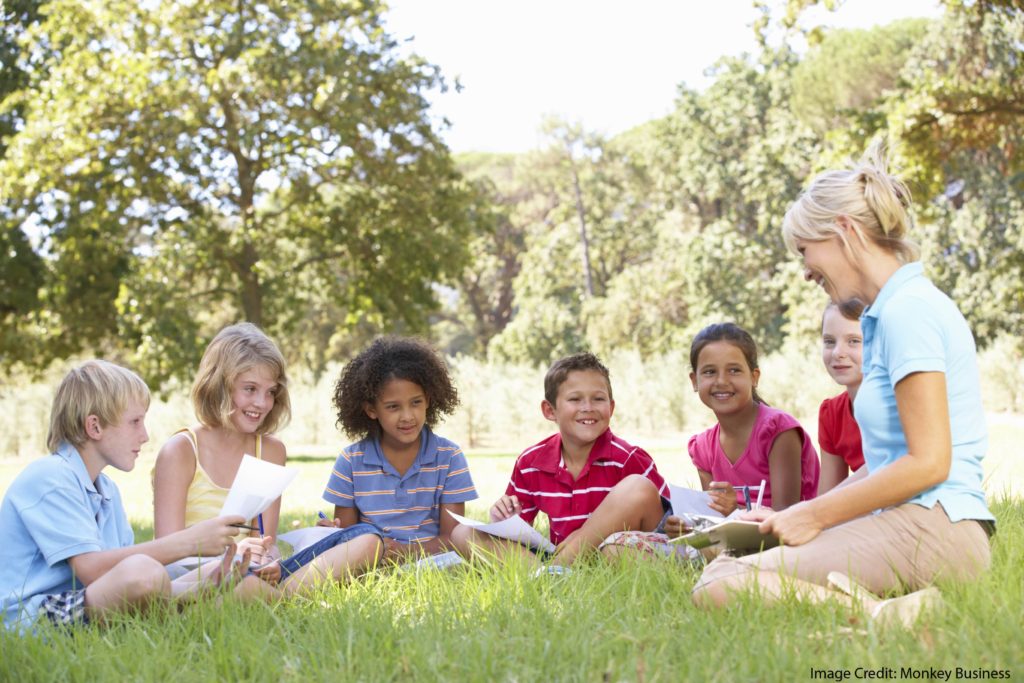What strategies work best for math teaching?
And, crucially, how do we know?
To answer this question, we might rely on our teacherly instincts. Perhaps we might rely on various educational and scientific theories. Or, we might turn to data. Even big data.
Researchers in Sweden wondered if they could use the TIMSS test to answer this question.
(“TIMSS” stands for “Trends in International Mathematics and Science Study,” given every four years. In 2015, 57 countries participated, and 580,000 students. That’s A LOT of students, and a lot of data.)
3 Math Teaching Strategies
When students take these tests, they answer questions about their classroom experience.
In particular, they answer questions about 3 math teaching strategies. They are asked how often they…
Listen to the teacher give a lecture-style presentation.
Relate what they are learning in mathematics to they daily lives.
Memorize formulas and procedures.
Researchers want to know: do any of these teaching practices correlate with higher or lower TIMSS scores? In other words, can all these data help us evaluate the effectiveness of specific teaching practices?
2 Math Teaching Theories
Helpfully, the researchers outline theories why each of these practices might be good or bad.
As they summarize recent decades of math-teaching debate, they explain that “researchers with their roots in psychology and cognitive science” champion
formal mathematical notions,
explicit instruction where teachers show students how to solve math problems,
practicing and memorizing rules and worked examples.
On the other hand, “researchers with their roots in the reform movement” champion
connecting math to students’ daily lives,
a problem-solving approach,
understanding ideas and connections, rather than memorization.
Doubtless you’ve heard many heated debates championing both positions.
Predictions and Outcomes
These theories lead to clear predictions about TIMSS questions.
A cognitive science perspective predicts that “lecture-style presentations” and “memorizing formulas” should lead to higher TIMSS scores.
A reform-movement perspective predicts that “relating math to daily life” should lead to higher scores.
What did the data analysis show?
In fact, the cognitive science predictions came true, and the reform predictions did not.
In other words: students who listened to presentations of math information, and who memorized formulas did better on the test.
Likewise, students who applied math learning to daily life learned less.
An Essential Caveat
As these researchers repeatedly caution, their data show CORRELATION not causation.
It’s possible, for instance, that teachers whose students struggle with math resort to “daily life” strategies. Or that both variables are caused by a third.
Potential Explanations
“Connecting new math learning to real life situations” seems like such a plausible suggestion. Why doesn’t it help students learn?
These researchers offer two suggestions.
First, every math teaching strategy takes time. If direct instruction is highly effective, then anything that subtracts time from it will be less effective. In other words: perhaps this strategy isn’t harmful; it’s just less effective than the others.
Second, perhaps thinking about real-life examples limits transfer. If I use a formula to calculate the area of a table, I might initially think of it as a formula about tables. This fixed notion might make it harder for me to transfer my new knowledge to — say — rugby fields or floor plans.
At present, we can’t know for sure.
A final point. Although this research suggests that direct instruction helps students learn math, we should remember that bad direct instruction is still bad.
Lectures can be helpful, or they can be deadly tedious.
Students can memorize pertinent and useful information. Or, they can memorize absurd loads of information.
(A student recently told me she’d been required to memorize information about 60 chemical elements. Every science teacher I’ve spoken with since has told me that’s ridiculous.)
And so: if this research persuades to you adopt a direct-instruction approach, don’t stop there. We need to pick the right pedagogical strategy. And, we need to execute it well.
Cognitive science can help us do so..

















